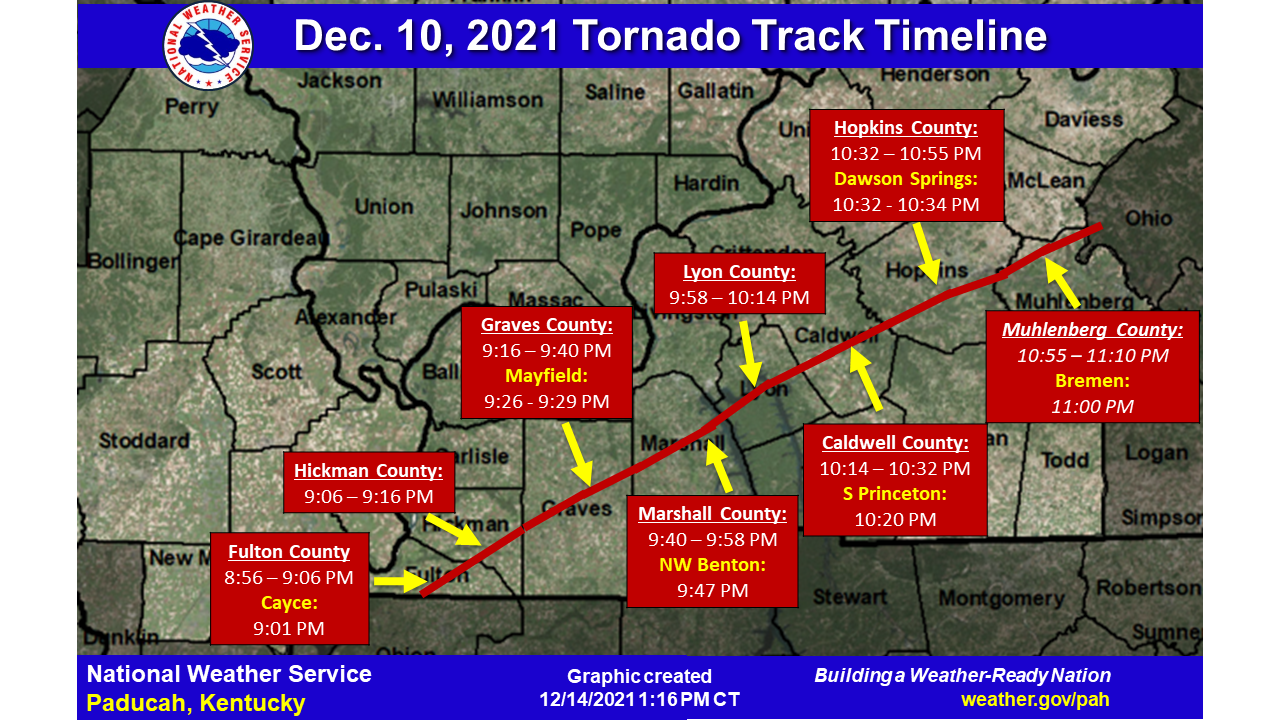The recent tornadoes that hit the Mid-Mississippi Valley are some of the most deadly in U.S. history. The worst of the damage hit Kentucky on December 10, 2021, causing at least 75 deaths. These tornadoes hit much later in the year than the typical peak tornado season which occurs in the spring and summer, and are extremely rare in December. This divergence is fueling discussion about how climate change could affect tornadoes by changing the usual season, geographic range, or possibly the severity of these weather events. But finding a link between warming weather and tornadoes has been inconclusive.

The possible effect of climate change on tornadoes is tied to the severe thunderstorm conditions that generate tornadoes. In a typical year, approximately 1300 thunderstorms hit America. Tornadoes can form in weather conditions where cold air pushed over warm, moist air creates updrafts in the presence of strong, vertical wind shear. Warmer temperatures caused by climate change may encourage conditions of atmospheric instability that are favorable for tornado formation, but more warmth and humidity may also decrease wind shear.
While other extreme weather events like drought, extreme heat, and flood can be clearly linked to rising temperatures, the connection of climate change with tornadoes is more difficult to understand. Some of the obstacles that prevent us gaining a clearer picture of this relationship include:
- Variability of tornado patterns from year to year: Tornado patterns are inconsistent which makes it more difficult to track possible changes in frequency or density.
- The difficulty of modeling how tornadoes form: Tornadoes are too geographically small to be simulated by climate models. Models can predict thunderstorm conditions that often lead to the formation of tornadoes.
- Limited data collection: Official tornado records in the U.S. date back only to the 1950s. In addition, tracking the strength of a tornado often relies on eyewitness testimony and damage assessments after the storm. Improved radar technology and the implementation of the Enhanced Fujita Scale (EF Scale) for measuring tornado intensity has improved the accuracy of data collection in recent years.
While other direct connections between climate change and tornadoes are uncertain, scientists have tied warmer temperatures to a rise in the seasonality and amount of the most severe thunderstorms. Data indicates that tornadoes are forming in denser “clusters” and the geographic range where they usually occur is shifting eastward. The unusual timing of recent storms in December appears to be caused in part by record warm temperatures in early winter across most of the country. This year, the region has experienced unusually warm temperatures for the season.
These changes mean that we should be conscious of the risk of tornadoes in places and times that they have never been before. This change is something to keep in mind for the safety of your family and property.